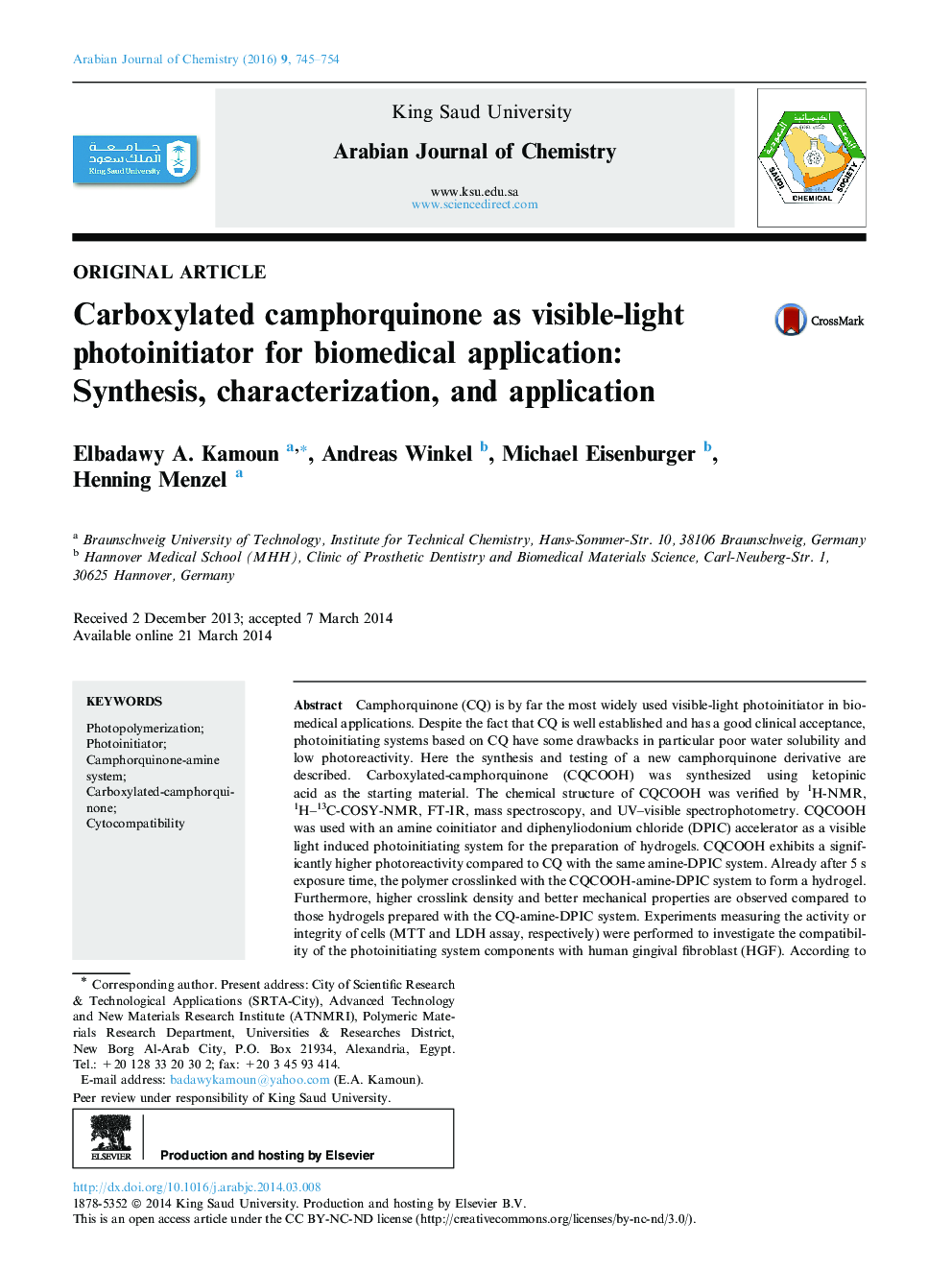| کد مقاله | کد نشریه | سال انتشار | مقاله انگلیسی | نسخه تمام متن |
|---|---|---|---|---|
| 1252549 | 1496028 | 2016 | 10 صفحه PDF | دانلود رایگان |
Camphorquinone (CQ) is by far the most widely used visible-light photoinitiator in biomedical applications. Despite the fact that CQ is well established and has a good clinical acceptance, photoinitiating systems based on CQ have some drawbacks in particular poor water solubility and low photoreactivity. Here the synthesis and testing of a new camphorquinone derivative are described. Carboxylated-camphorquinone (CQCOOH) was synthesized using ketopinic acid as the starting material. The chemical structure of CQCOOH was verified by 1H-NMR, 1H–13C-COSY-NMR, FT-IR, mass spectroscopy, and UV–visible spectrophotometry. CQCOOH was used with an amine coinitiator and diphenyliodonium chloride (DPIC) accelerator as a visible light induced photoinitiating system for the preparation of hydrogels. CQCOOH exhibits a significantly higher photoreactivity compared to CQ with the same amine-DPIC system. Already after 5 s exposure time, the polymer crosslinked with the CQCOOH-amine-DPIC system to form a hydrogel. Furthermore, higher crosslink density and better mechanical properties are observed compared to those hydrogels prepared with the CQ-amine-DPIC system. Experiments measuring the activity or integrity of cells (MTT and LDH assay, respectively) were performed to investigate the compatibility of the photoinitiating system components with human gingival fibroblast (HGF). According to these experiments neither CQCOOH, l-arginine nor N-phenylglycine as amine coinitiators have toxic effects even in high concentrations. In contrast, HGF cell viability is considerably decreased at DPIC-concentrations higher than 0.25%.
Journal: Arabian Journal of Chemistry - Volume 9, Issue 5, September 2016, Pages 745–754
